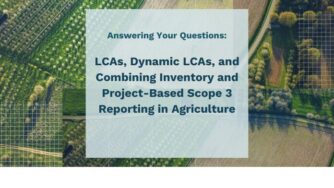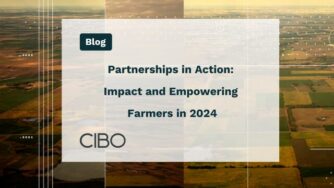Sustainability has been spreading to supply chain management. Enterprises are prioritizing how to create products that not only sell well but also have a lower impact on the environment. To help change how products are manufactured from the bottom up, organizations are looking for new ways to build carbon insetting into their supply chains.
When it comes to reducing carbon emissions, organizations can go about it in two ways – carbon offsets or carbon insets. Carbon offsets are the purchase of carbon credits to offset the production of a good while carbon insetting helps enterprises build sustainable activities directly into their supply chain.
What is Carbon Insetting?
A Carbon inset is when an organization invests in sustainable practices within its own supply chain. Carbon insets support the implementation of practices that sequester carbon, promote climate resilience, protect biodiversity, and restore ecosystems. For agriculture, carbon insetting means prioritizing regenerative agriculture which helps to reduce carbon emissions and build resilience across organizations’ supply chains.
How does Carbon Insetting Work?
In regenerative agriculture, carbon insetting is when farmers choose practices that lead to carbon sequestration and a reduction in greenhouse gas emissions. Practices like low and no-till, cover cropping and precision nitrogen application all contribute to higher carbon insetting.
Farmers represent a vast number of small enterprises, each having its own carbon footprint. In order to successfully build carbon insetting into a large number of growers, a scalable solution is necessary.
How CIBO can help with Carbon Insetting
Scalability of credit insetting is achieved through CIBO’s modeling approach, where mechanistic and statistical models are applied to grower practices to accurately calculate carbon footprint without the need for on-site soil sampling.
CIBO quantifies and verifies the Regenerative Potential(™) of farms and fields across the U.S. CIBO looks at the amount of carbon generated in a particular field based on the difference between conventional management practices and the actual, sustainable farming and management practices a farmer has adopted.
CIBO scales verification of regenerative practices with a combination of remote sensing, satellite-based computer vision, farmer attestation and 3rd party, in-person review. Well-established and proven quantification methods such as the IPCC, RUSLE2, WEPP and the SALUS model with over 30 years of proven, in-field and academic validation are used in concert with each other.
CIBO Enterprise helps Companies Interested in Insetting
By combining immediate and quantifiable reductions in agricultural greenhouse gas emissions with medium and longer-term changes in soil carbon for every farm and field in the US, CIBO creates a unique and scalable approach that accelerates economically and environmentally sustainable farming. By making it easy for farmers to enroll their operations and paying them every year for the management practices and choices they make each season, CIBO eliminates the complexity and uncertainty that has long plagued agricultural carbon marketplaces.
Interested in learning more about how CIBO can help organizations inset their supply chain? Explore our CIBO Enterprise offering.



